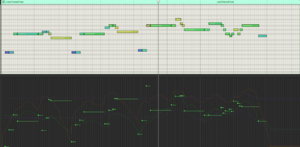Jonathan Moray
Professional Procrastinator
I'm not really too impressed with any of the version of Leia's Theme posted here. But if I had to choose one it would be Infinite Woodwinds. It's the most consistent and doesn't have as many imperfections and quirks as the other ones. @Land of Missing Parts BWW Exp B as second for consistency, and maybe @5Lives CineWinds for tone. BWW Exp B only having a single velocity layer helps a lot with the consistency of the tone, legato, and most of all, the vibrato.
@El Buhdai, did you use anything else, other than vibrato and dynamics with IWW? Because I believe it would help to add some slight harmonics in places. The one thing, and this is a problem across everything modelled/semi-modelled (or whatever you want to call it), it often sounds too steril, it's too perfect. But at least with this approach you control the imperfections.
Adding a bit of a shelf EQ from 8k also helped with the tone of IWW in my opinion.
@El Buhdai, @Land of Missing Parts, @5Lives, or anyone else.
If you'd like I have a track you could compare next. I've recently listened a bit to the score for The Passion of The Christ, and it has some really hauntingly beautiful melodies. Especially in the track 'Peter Denies Jesus' there's a really good flute part. There's actually two flute parts; the ethnic flutes doing the bending right at the beginning, and the main melody. Both parts would be interesting to see which libraries might be able to pull it off. I know BWW, nor IWW, has any ethnic flutes, yet, but standard flute bends should do.
The piece is not extremely advanced or hard to play, but it is rather agile in parts, and it would be interesting to see how the different libraries handla that without tripping up.
John Debney - Peter Denies Jesus (The Passion of The Christ)
@El Buhdai, did you use anything else, other than vibrato and dynamics with IWW? Because I believe it would help to add some slight harmonics in places. The one thing, and this is a problem across everything modelled/semi-modelled (or whatever you want to call it), it often sounds too steril, it's too perfect. But at least with this approach you control the imperfections.
Adding a bit of a shelf EQ from 8k also helped with the tone of IWW in my opinion.
@El Buhdai, @Land of Missing Parts, @5Lives, or anyone else.
If you'd like I have a track you could compare next. I've recently listened a bit to the score for The Passion of The Christ, and it has some really hauntingly beautiful melodies. Especially in the track 'Peter Denies Jesus' there's a really good flute part. There's actually two flute parts; the ethnic flutes doing the bending right at the beginning, and the main melody. Both parts would be interesting to see which libraries might be able to pull it off. I know BWW, nor IWW, has any ethnic flutes, yet, but standard flute bends should do.
The piece is not extremely advanced or hard to play, but it is rather agile in parts, and it would be interesting to see how the different libraries handla that without tripping up.
John Debney - Peter Denies Jesus (The Passion of The Christ)






